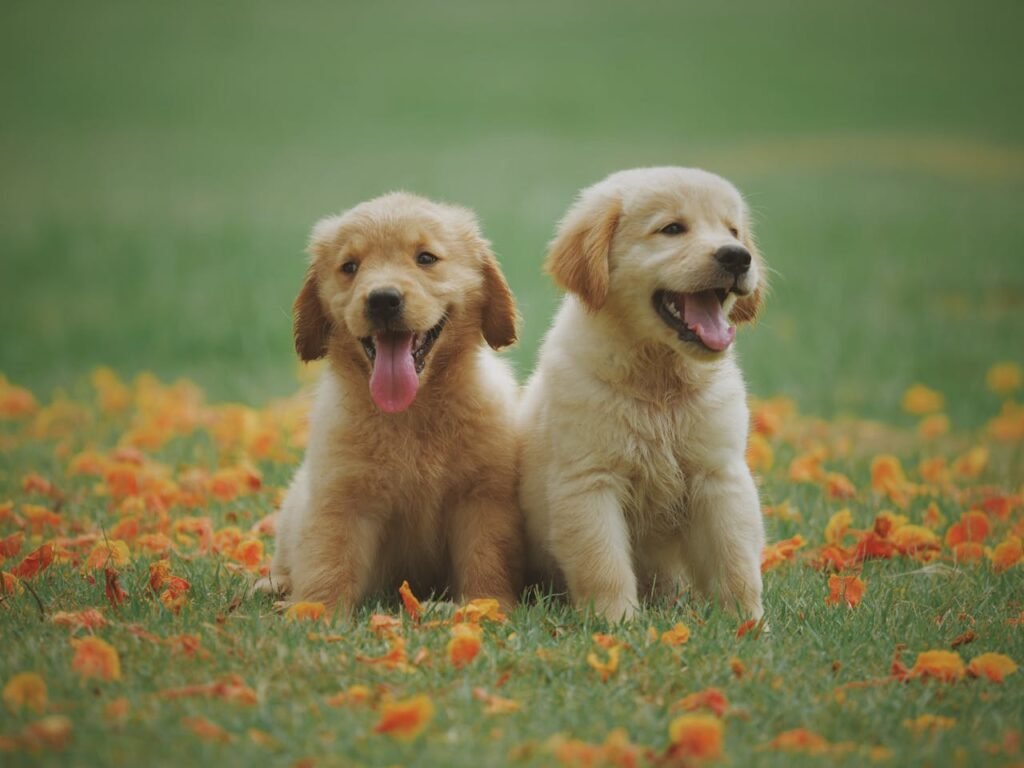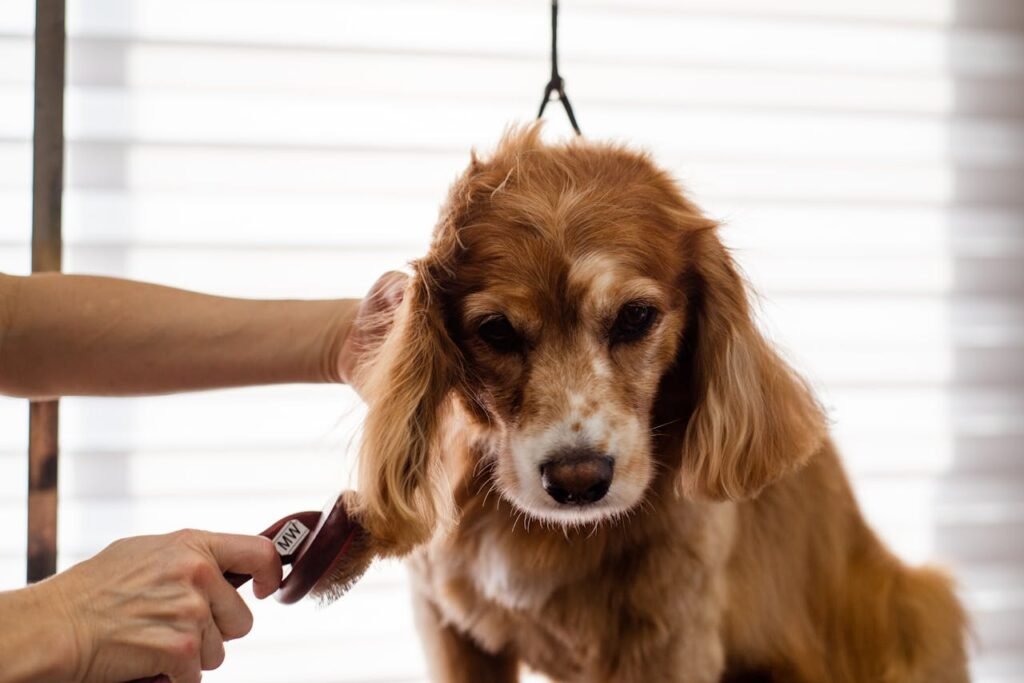How to Introduce Your Dog to a New Baby. Learn how To smoothly introduce your dog To your new baby! Our simple tips will help create a happy, safe bond for your growing family. Start today!
How To Introduce Your Dog To a New Baby
Understanding Dog Behavior
Dogs possess unique ways of communicating feelings & thoughts. A dog may exhibit excitement, anxiety, or curiosity when faced with new situations. Understanding these behaviors becomes crucial when introducing a new member, like a baby, into their environment. Observing your dog’s body language, eye contact, & vocalizations will provide vital information on their emotional state.
Every dog reacts differently based on personality traits & previous experiences. Some may embrace change, while others might be more reserved. Recognizing these differences can create a smoother transition for everyone involved. Puppies often require patience, while older dogs may have established routines & boundaries that need adjustments.
By taking time To observe & understand your dog’s behavior, you’ll lay down a strong foundation. This investment pays off, as both dog & baby will navigate this life change together. Preparing for this journey ensures harmony within your family unit.
Preparing Your Dog for Baby’s Arrival
Preparation plays an essential role in a successful introduction between dog & baby. First, you must begin altering routines before baby’s arrival. Implement gradual changes that mimic scenarios your dog will face when The baby arrives. This approach desensitizes your dog To sounds, smells, & changes in household dynamics.
Consider incorporating baby items into your dog’s environment, such as toys, clothes, or even a crib. Allow them To sniff & explore, helping them associate positive experiences with new smells. Many resources exist, including expert advice from AKC on how best To implement this process.
Additionally, having a designated space for your dog where they feel safe allows them a retreat during overwhelming moments. This setup can help maintain your dog’s comfort as you transition into parenthood. Adjustments might take time, but positive reinforcement can aid smooth transitions.
Introducing Your Dog & Baby
The first introduction between dog & baby should occur in a controlled environment. Choose a calm moment when your dog feels relaxed. Leash your dog for initial introductions, allowing controlled interactions without overwhelming stimuli. Offer treats as a reward for positive behavior during The introduction.
Take things slowly. Introduce your baby with gentle sounds, such as cooing or quiet talking, allowing your dog time To process new experiences. If your dog shows signs of stress or anxiety, withdraw & try again later. Rest assured, repetition coupled with patience yields successful outcomes.
Establish boundaries early on. Your dog must understand which parts of their space remain off-limits, helping them adjust effectively. Consistency remains key, as each interaction gradually builds trust between dog & baby. The earlier you begin this process, The better prepared your furry friend will be.
Creating Positive Associations
During this transformative time, positive associations will foster security within your dog. Every encounter between them & your baby should result in delightful experiences. Encourage gentle interactions such as petting with supervision & rewarding your dog for being calm around The baby.
Employ treats & affection when your dog remains calm. This will reinforce desired behaviors during interactions. Use phrases or commands your dog understands, ensuring they link positive experiences with their new family member.
Be sure not To overlook individual attention. Your dog still requires love & care amidst significant changes. Continue engaging in activities that nurtured your bond before baby’s arrival. Balance is essential; thus, maintaining routines can have calming effects for both you & your furry friend.
Understanding Body Language During Introductions
Throughout this process, being attuned To your dog’s body language proves essential. Dogs communicate volumes through their posture & movements. By being vigilant, you’ll decipher underlying emotions as they encounter your newborn.
Relaxed ears, wagging tails, & soft eyes signify comfort & curiosity. Conversely, stiff tails, growls, or whining may indicate anxiety. Immediate response To these signals deters potential issues from escalating. Create an environment where your dog feels secure enough To express any discomfort.
Providing attention & reassurances during potentially stressful moments fosters trust. Acknowledge your dog’s emotions; doing so leads To nurturing a respectful relationship between both parties. Continuous dialogue with your dog aids their understanding of changes happening in your home.
Feature List
- ✨ Gradual introduction of baby items
- 🐶 Controlled first meeting
- 📅 Schedule adjustments
- 🎉 Positive reinforcement techniques
- 🚪 Safe spaces for your dog
Addressing Potential Behavior Issues
During stages of adjustment, certain behavioral issues may arise. Common challenges include jealousy, anxiety, or fear. It’s crucial not To dismiss these feelings; instead, address them through practical strategies. Communication remains paramount throughout this process.
Creating routines allows your dog To understand what To expect. In turn, this can significantly decrease anxiety. If necessary, consult with a trainer who specializes in dog behavior. Their expertise could help you devise strategies tailored specifically for your household.
Also, do not hesitate seeking professional help if your dog displays aggressive tendencies or significant anxiety. Early intervention is vital in ensuring both baby & dog coexist harmoniously. Take advantage of resources, including support groups & online communities, for guidance.
Maintaining Boundaries for Both Baby & Dog
Settling boundaries facilitates a healthy relationship. For your dog’s safety, set limits regarding areas that remain off-limits for interaction. Babies often require dedicated spaces, such as cribs or playpens. Dogs should never feel threatened or territorial about these spaces.
In addition, teaching children appropriate behavior around pets will help maintain peaceful coexistence. Explain why certain actions, like grabbing a dog’s tail or face, remain unacceptable. Children should understand The importance of respecting a dog’s personal space.
Monitoring interactions remains crucial as your baby grows & interacts more freely. Always supervise playtime; doing so protects both baby & dog from potential mishaps. Establishing these guidelines early establishes mutual respect between your growing family.
Resources for Support & Advice
Several valuable resources exist online concerning introducing dogs To babies. Platforms such as online forums provide a wealth of knowledge shared by other parents who’ve navigated this journey. Engage with communities, share experiences, & seek advice on handling unique challenges as they arise.
One such forum includes Reddit discussions that share personal experiences & tips. Tapping into resources offered by organizations, like AKC, also assists in navigating this pivotal phase.
Leverage support networks, attend classes, & embrace opportunities for learning more about pets. Sharing experiences with fellow parents creates camaraderie & ensures you’re never alone on your journey. Connecting with others fosters a deeper understanding of how dogs & babies coexist peacefully.
Comparison Table of Introductory Approaches
| Approach | Pros | Cons |
|---|---|---|
| Leisure Introduction 🐾 | Low pressure environment | Possible overexcitement |
| Gradual Exposure 🍼 | Builds confidence | Time-consuming process |
| Supervised Playdates 🎈 | Promotes bonding | Requires constant vigilance |
Staying Informed & Educated
Throughout this entire journey, staying informed on best practices ensures continued success. Engage with literature, attend training sessions, & consult professionals whenever needed. This commitment promotes not only The well-being of your dog & baby but strengthens your family’s bond, creating lasting happiness.
Share learned experiences with others, as valuable insights can uplift fellow pet owners also entering parenthood. Building a network allows you To exchange tips while navigating challenging moments. Remember, no question remains insignificant.
For further insights into pet care, consider visiting Haven for Pet Care. Their comprehensive resources address a wide array of topics, enriching your understanding of pet behavior & care.
Learn how To smoothly introduce your dog To your new baby! Our simple tips will help create a happy, safe bond for your growing family. Start today!

How can I prepare my dog for The arrival of a new baby?
To prepare your dog for a new baby, start by gradually changing their routine To mimic what it will be like after The baby arrives. This can include reducing attention & playtime leading up To The baby’s arrival. Introduce baby sounds, such as crying & cooing, using recordings To help acclimate your dog To these noises.
What should I do when introducing my dog To The newborn for The first time?
During The first introduction, ensure your dog is calm & secured on a leash. Allow your dog To sniff & observe The baby from a safe distance. Speak To your dog in a calm & reassuring manner, offering treats for good behavior. Gradually decrease The distance as your dog shows positive reactions.
How can I help my dog adjust To The changes that a new baby brings?
To help your dog adjust, maintain their routine as much as possible even after The baby arrives. Regular exercise & attention are crucial. Create a safe space for your dog where they can retreat when they feel overwhelmed. Engage them in activities that keep them stimulated & provide positive reinforcement for good behaviors around The baby.
Conclusion
Introducing your dog To a new baby can be a smooth journey with The right approach. Start slowly, giving your dog time To adjust To The new sounds & smells that come with a baby. Use positive reinforcement To reward good behavior, like calmness around The baby. Always supervise their interactions & never force them together. Remember, patience is key; it may take some time for both your dog & baby To feel comfortable. With love & care, you can create a happy environment for everyone, allowing your furry friend & your little one To grow up together in harmony.


